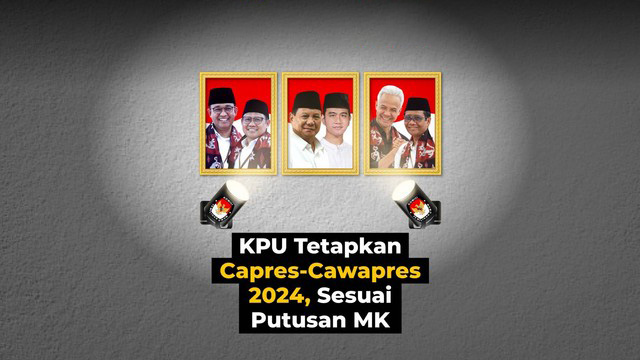Mastering Micro-Influencer Campaigns for Niche Audience Engagement: Deep Technical Strategies and Practical Steps
Implementing micro-influencer campaigns tailored to niche audiences requires a nuanced, highly strategic approach. This deep-dive explores the technical intricacies and actionable methods to optimize each phase—from precise influencer selection to measurement and maintaining long-term relationships—ensuring your campaigns deliver measurable ROI and authentic engagement.
Table of Contents
- Defining Precise Micro-Influencer Selection Criteria for Niche Campaigns
- Crafting Targeted Outreach Strategies for Niche Micro-Influencers
- Structuring Micro-Influencer Campaigns for Niche Engagement
- Developing Content Guidelines and Collaboration Workflows
- Implementing Tracking and Measurement Tactics for Niche Audience Response
- Managing Challenges and Common Pitfalls in Micro-Influencer Campaigns
- Case Study: Step-by-Step Execution of a Micro-Influencer Niche Campaign
- Reinforcing Campaign Value and Connecting to Broader Strategy
1. Defining Precise Micro-Influencer Selection Criteria for Niche Campaigns
a) Identifying Key Metrics for Micro-Influencer Relevance and Engagement
To select micro-influencers effectively, focus on qualitative and quantitative metrics that reflect their relevance to your niche audience. Key metrics include:
- Relevance Score: Based on topical alignment and content themes. Use keyword-based content analysis tools (e.g., Mention, Brandwatch) to quantify relevance.
- Engagement Rate: Calculate as
(Total Likes + Comments) / Follower Count. Aim for >3% in niche sectors, but adjust based on platform norms. - Audience Authenticity: Use tools like FakeFollowerCheck or HypeAuditor to identify fake followers and engagement bubbles.
- Content Quality and Consistency: Review past posts for authenticity, niche specificity, and production quality.
b) Developing a Scoring System for Niche Alignment and Audience Authenticity
Create a weighted scoring matrix to evaluate potential influencers. Example:
| Criteria | Weight | Scoring Range (1-5) | Calculation |
|---|---|---|---|
| Relevance | 30% | 1-5 | Score x 0.3 |
| Engagement | 25% | 1-5 | Score x 0.25 |
| Audience Authenticity | 25% | 1-5 | Score x 0.25 |
| Content Quality | 20% | 1-5 | Score x 0.2 |
This systematic approach ensures objectivity, helps prioritize high-potential influencers, and minimizes bias.
c) Utilizing Advanced Tools and Platforms for Micro-Influencer Discovery
Leverage specialized platforms such as Heepsy, Influenex, and Upfluence for niche-specific influencer discovery. These tools enable filtering by niche keywords, location, audience demographics, engagement metrics, and authenticity scores. For example:
- Heepsy: Use keyword filters like “vegan recipes” or “urban cycling” to identify micro-influencers within specific niches.
- Upfluence: Utilize API integrations for real-time data collection, enabling dynamic scoring and filtering.
- Manual Validation: Cross-verify platform findings with manual profile review, paying attention to content relevance, audience comments, and engagement authenticity.
Always combine platform data with manual vetting to avoid fake followers and ensure alignment with your niche.
2. Crafting Targeted Outreach Strategies for Niche Micro-Influencers
a) Personalizing Communication to Foster Genuine Collaborations
Personalization is critical when reaching out to niche micro-influencers. Use data-driven insights to craft messages that demonstrate genuine interest. For example, reference specific posts that align with your campaign goals, mention shared values, or highlight how their unique voice complements your brand. Practical steps include:
- Review their recent content thoroughly to identify themes, tone, and style.
- Draft a personalized opening line referencing a recent post or project.
- Clearly articulate the mutual benefits, emphasizing niche relevance and audience fit.
- Include a call-to-action that invites dialogue, not just a transactional pitch.
“Personalized outreach increases response rates by up to 70%, especially within niche communities where authenticity is valued.” — Influencer Marketing Hub
b) Designing Effective Pitch Templates for Niche Contexts
Create adaptable templates that can be customized quickly. A good template includes:
- Introduction: Briefly introduce your brand and campaign purpose.
- Relevance: Explain why they specifically are a perfect fit based on their niche content.
- Offer Details: Clarify what’s expected, including content type, timeline, and compensation.
- Incentives: Highlight unique benefits like exclusive products, long-term partnership opportunities, or monetary rewards.
- Call to Action: Suggest a follow-up call or reply to discuss further.
Example template snippet:
Dear [Influencer Name], I've been following your work on [specific niche content], and I believe your authentic voice aligns perfectly with our upcoming campaign for [brand/product]. We'd love to collaborate on creating content that resonates deeply with your community. Are you open to discussing a partnership? We’re flexible on content types and timelines and offer competitive compensation. Looking forward to your thoughts! Best, [Your Name]
c) Automating Outreach While Preserving Personalization
Use CRM tools like HubSpot, Mailshake, or Pitchbox to automate initial outreach sequences. Key techniques include:
- Segmentation: Group influencers by niche, engagement level, or location for targeted messaging.
- Personalized Templates: Use merge tags for names, niche references, or unique comments to maintain authenticity.
- Follow-Up Sequences: Schedule gentle reminders if no response within 3-5 days, customizing follow-up messages based on previous interactions.
- Monitoring & Adjustment: Track response rates and adjust messaging tone or content based on performance data.
“Automation should enhance personalization, not replace it. Use data insights to keep your outreach relevant and genuine.” — MarketingProfs
3. Structuring Micro-Influencer Campaigns for Niche Engagement
a) Creating Clear, Niche-Specific Campaign Briefs and Expectations
Develop detailed briefs that specify content themes, tone, hashtags, tagging, and platform-specific requirements. To maximize relevance:
- Use Niche Language: Incorporate jargon or terminology familiar to the community.
- Visual Guidelines: Provide style guides, approved color palettes, or content templates to ensure consistency.
- Performance Metrics: Specify KPIs such as engagement rate targets, click-throughs, or conversions.
- Legal & Disclosure: Clarify FTC compliance and proper disclosure practices relevant to your niche.
b) Coordinating Content Calendars with Micro-Influencers
Use shared digital calendars (e.g., Google Calendar, Asana) to align content publishing schedules. Practical steps include:
- Define key dates aligned with niche calendar events or product launches.
- Set deadlines for drafts, reviews, and final content submission.
- Implement reminders for compliance checks and approval stages.
c) Establishing Performance Milestones and Feedback Loops
Set SMART (Specific, Measurable, Achievable, Relevant, Time-bound) milestones. For example:
| Milestone | Target | Deadline | Feedback Method |
|---|---|---|---|
| Draft Review | Content aligned with brief | 2 weeks before launch | Video call / Document comments |
| Performance Check | Engagement & conversions meet targets | Within 2 weeks post-launch | Analytics dashboard review |


















